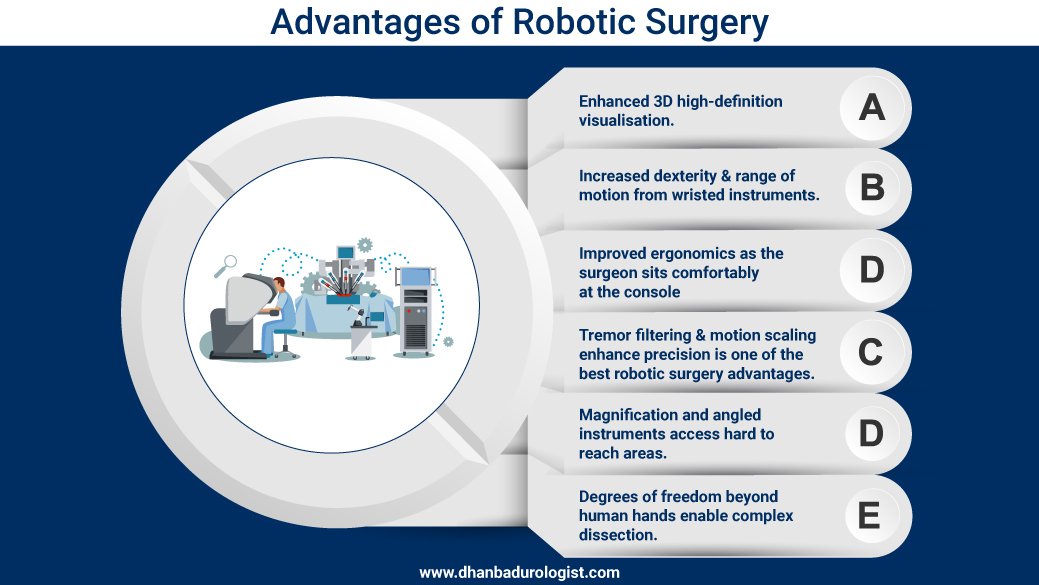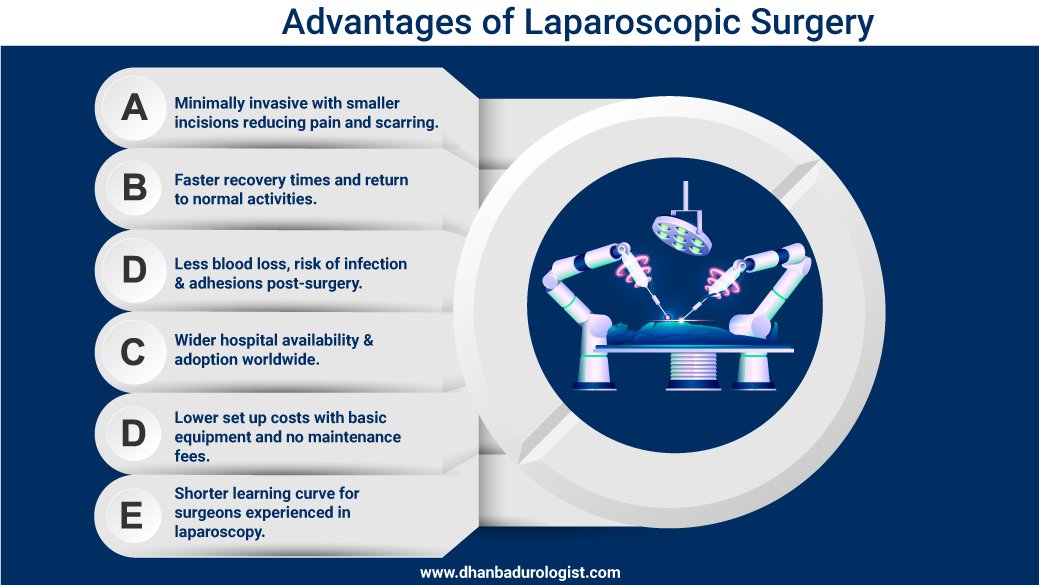Cancer treatment has advanced significantly in recent decades. Where open surgeries were once the standard approach, minimally invasive techniques like robotics vs laparoscopy surgery are now commonly used. Both methods allow surgeons to access the surgical site through small incisions rather than large incisions required for open surgeries. This results in less pain, scarring, and faster recovery times for patients.
However, laparoscopic and robotic surgeries differ in key aspects like the instruments used and how they are manipulated.
Choosing between the two requires understanding their similarities and differences. This article provides a comprehensive overview of laparoscopic and robotic surgeries for cancer treatment, highlighting their advantages and limitations to help patients make an informed decision.
Laparoscopic Surgery
Laparoscopic surgery, also known as keyhole surgery, involves performing surgery through small incisions using long thin instruments inserted through trocars. A laparoscope, which is a thin tube with a high-resolution camera and light source, is inserted through one of the trocars to provide visualization of the surgical site on a video monitor.
The surgeon manipulates surgical instruments like graspers, scissors, and staplers through the other trocar incisions while watching the video feed. This allows internal organs and tissues to be visualized and manipulated without a large open incision. Some key aspects of laparoscopic surgery include:
- Instruments are long and thin to fit through trocars ranging from 5mm to 12mm in diameter. They provide limited dexterity compared to open surgery.
- The camera provides 2D visualization of the surgical field, with reduced depth perception compared to direct vision in open surgery.
- Carbon dioxide gas is usually insufflated into the abdominal cavity to improve visibility and working space.
- Some common cancers treated with laparoscopic surgery include colon, stomach, liver, pancreatic and ovarian cancers. The key advantages over open surgery include smaller incisions, less blood loss, shorter hospital stay and quicker recovery.
Robotic Surgery
Robotic surgery uses a computer-controlled robotic system to manipulate specialized instruments through small incisions, usually in a minimally invasive manner. The da Vinci Surgical System is the most commonly used robotic platform for cancer surgery worldwide.
In this system, the surgeon sits at a console several feet away from the patient and controls robotic arms with wristed instruments, similar in function to standard laparoscopic tools but with additional articulation. A 3D high-definition camera provides a highly magnified stereoscopic view of the surgical field to the surgeon.
Some key aspects of robotic surgery include:
- 3D high-definition camera with 10x optical zoom provides superior visualisation to the surgeon compared to 2D laparoscopy.
- Computer software helps filter hand tremors and scale down surgeon’s movements for more precise dissection and suturing.
- Conversion to open surgery is less likely than conventional laparoscopy due to the technical advantages over 2D visualization and rigid laparoscopic instruments.
- Robotic surgery is well-suited for cancer types requiring complex dissection near vital structures like prostate, cervical, bladder and rectal cancers. The enhanced dexterity and 3D visualization help minimize risks of injury to nearby organs.
Advantages of Robotic Surgery

- Enhanced 3D high-definition visualization.
- Increased dexterity and range of motion from wristed instruments.
- Improved ergonomics as the surgeon sits comfortably at the console.
- Tremor filtering and motion scaling enhance precision is one of the best robotic surgery advantages.
- Magnification and angled instruments access hard to reach areas.
- Degrees of freedom beyond human hands enable complex dissection.
Advantages of Laparoscopic Surgery

- Minimally invasive with smaller incisions reducing pain and scarring.
- Faster recovery times and return to normal activities.
- Less blood loss, risk of infection and adhesions post-surgery.
- Wider hospital availability and adoption worldwide.
- Lower set up costs with basic equipment and no maintenance fees.
- Shorter learning curve for surgeons experienced in laparoscopy.
Choosing the Right Approach: Robotics vs Laparoscopy surgery
When choosing between Robotics vs Laparoscopy surgery for cancer treatment, some factors to consider include:
- Cancer Type and Stage: More advanced/complex cancers of pelvis, rectum etc. are better treated with robotics. Early stage cancers can be managed with either.
- Surgeon Experience: Surgeons highly experienced with either technique can achieve good outcomes. Novice surgeons may find robotics easier initially.
- Hospital Facilities: Not all hospitals have a robotic system. Laparoscopy is more widely available but robotics offers technical advantages where available.
- Cost Considerations: Out-of-pocket costs vary depending on insurance coverage and hospital policies. Generally robotics is more expensive upfront but may reduce overall costs.
- Expected Recovery: Both allow faster recovery over open surgery. Robotics may allow a slightly faster return to normal activities.
- Individual Risk Tolerance: Some patients more comfortable with minimal incisions prefer robotics, while others are okay with proven laparoscopy.
- Long Term Oncologic Outcomes: Long term cancer control outcomes are equivalent between the two techniques when performed by experienced surgeons.
In summary, for most early stage cancers, laparoscopic surgery performed by an experienced surgeon provides excellent oncologic outcomes with minimal invasiveness. For more advanced/complex cancers of pelvis and rectum, robotic surgery may offer technical advantages in dissection and nerve sparing capabilities. Overall, both are good minimally invasive options for cancer treatment when the above factors are considered. An informed discussion with one’s surgeon helps decide the best approach.
Conclusion
Robotics vs Laparoscopy surgery have revolutionized cancer treatment by providing minimally invasive alternatives to open surgeries. While both techniques reduce post-operative pain, blood loss and hospital stay compared to open procedures, robotics offers enhanced 3D visualization, instrument dexterity and precision. For complex cancer resections especially in confined spaces, robotics allows for more precise dissection near vital structures with less risk of injury.
However, laparoscopy remains a proven technique when performed by experienced surgeons, with the benefit of wider availability and lower costs. Overall, both laparoscopy and robotics, when used appropriately by skilled surgeons, provide excellent oncologic outcomes with minimal invasiveness for cancer patients. An individualized discussion weighing the pros and cons of each approach helps decide the optimal minimally invasive strategy in each case. If you are also seeking medical help for urological issues , you can contact and book an appointment with Dr.Saket Narnoli, who is known to be the Best Urologist in Dhanbad Providing Excellent Urological Services. With a tailored treatment plan and lifestyle modifications, Cancer treatment can usually be handled successfully.


